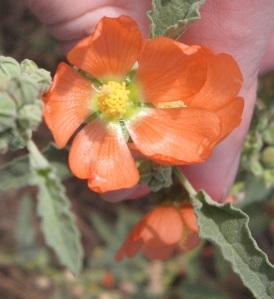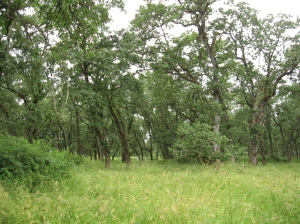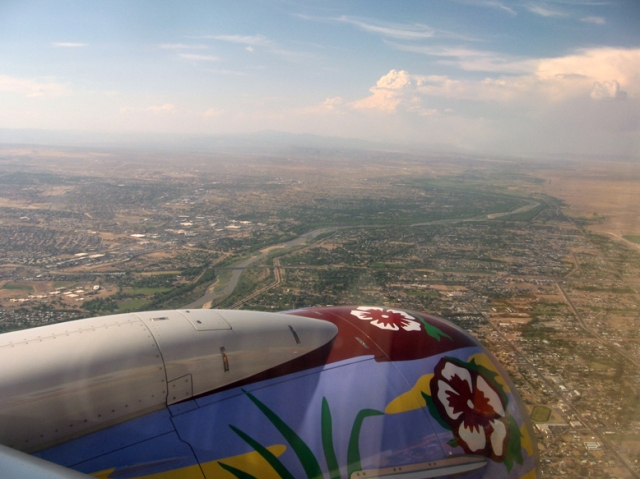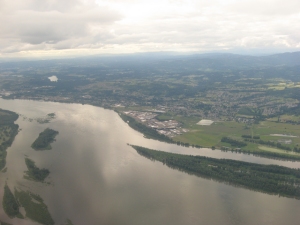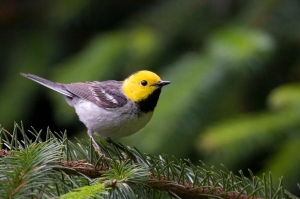In addition to the title bird (spoiler alert, I saw one!), I finally found some Inca Doves in the neighborhood thanks to Melissa. While we were walking to a cookout at a friend’s place, she stopped to look at an odd White-winged Dove on a wire and then said, “What’s that weird little dove?” And there was an Inca Dove sitting about ten feet away on a stone wall! It soon joined another in a nearby tree. We were both excited; Melissa had been wanting to see one of these cute doves since we moved here last summer.
The Gray Vireo may be one of the continent’s most visually boring birds. Out of all the small grayish birds found in the southwest, and there are many, the Gray vireo has to be the drabbest. Bushtits have personality and spunk, not to mention a striking white eye on adult males; Verdins have a bright yellow head; Black-tailed Gnatcatchers flip thier long black and white tails about; Juniper Titmice will scold you and come in for a closer look; Lucy’s Warblers sport a rufous rump. But Gray Vireos are…gray. And in a group kind of known for strong, persistent, if not melodious songs, this vireo’s repertoire contains short, punctuated syllables strung together.
 Gray Vireos can be hard to find. They prefer dry hillsides with scrubby vegetation which provide little shade for birders. The nearest breeding area to Albuquerque is on the Kirtland Air Force base south of the city. The same habitat extends into the northern Manzano mountain foothills which just touch the southeastern corner of the city. Surely the vireos must be on public land as well?
Gray Vireos can be hard to find. They prefer dry hillsides with scrubby vegetation which provide little shade for birders. The nearest breeding area to Albuquerque is on the Kirtland Air Force base south of the city. The same habitat extends into the northern Manzano mountain foothills which just touch the southeastern corner of the city. Surely the vireos must be on public land as well?
One of the local birders, Dave, found several Gray Vireos a few weeks ago at Manzano open space near the Four Hills area of Albuquerque. I made the trek to look for them a few days later, but I went late in the morning after the temperature had already risen into the 90s. Last weekend, another birder named Jim, found the vireos still there. Rebecca convinced me to make another try–plus I had the GPS coordinates from Dave!
 Rebecca, Joe, Sonia, and I headed up into the hills early to beat the heat. We hiked in and arrived at the site around 8 am. No vireos. Plenty of hummingbirds kept us entertains, including one little female or young male Calliope Hummingbird that hovered in front of my face investigating my screech-owl imitation. Black-chinned and Rufous-crowned Sparrows were surprisingly easy to find. I spotted a Virginia’s Warbler–a drab gray bird, save for the yellow on the throat and under the tail. So close. Then a Blue-gray Gnatcatcher. The color scheme matched better, but still not the vireo. The four of us spent about an hour searching and listening intently.
Rebecca, Joe, Sonia, and I headed up into the hills early to beat the heat. We hiked in and arrived at the site around 8 am. No vireos. Plenty of hummingbirds kept us entertains, including one little female or young male Calliope Hummingbird that hovered in front of my face investigating my screech-owl imitation. Black-chinned and Rufous-crowned Sparrows were surprisingly easy to find. I spotted a Virginia’s Warbler–a drab gray bird, save for the yellow on the throat and under the tail. So close. Then a Blue-gray Gnatcatcher. The color scheme matched better, but still not the vireo. The four of us spent about an hour searching and listening intently.
Joe found a small puddle of water on a rock where he had been photographing some bathing towhees. I suggested he play the recording one last time before we hiked out. What a surprise, one answered! It was hard at first to separate it from the louder Crissal Thrasher singing, but the shortened, abrupt vireo cadence was unmistakable. Now the trick would be finding it. Sonia and Joe kept getting glimpses of movement in the general area the song was coming from, but each time we got closer, the bird flew. Other birds tricked us momentarily, but we kept following the bird downhill. After about 50 minutes, we all got some distant views after it decided to land on the outside of a bush for once. Eventually it flew over the Air Force base fence where it decided to stay put, of course. It was a lifer for me! #546 in the US, #299 in New Mexico, and #221 for Bernalillo County.
Sonia and Joe kept getting glimpses of movement in the general area the song was coming from, but each time we got closer, the bird flew. Other birds tricked us momentarily, but we kept following the bird downhill. After about 50 minutes, we all got some distant views after it decided to land on the outside of a bush for once. Eventually it flew over the Air Force base fence where it decided to stay put, of course. It was a lifer for me! #546 in the US, #299 in New Mexico, and #221 for Bernalillo County.
Other highlights included an immature Cooper’s Hawk circling and intermittently perching near an unhappy flock of Bushtits. As the hawk flew off, a few hummingbirds escorted it away and higher into the air. Joe got an impressive photo of this event.
I found a Great purple hairstreak as well.























